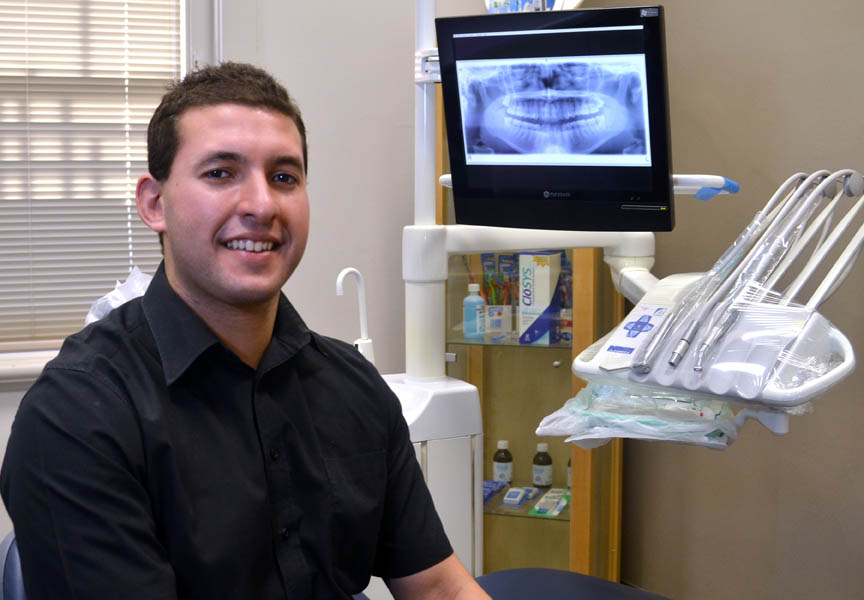We have all heard and been familiarised to x-rays from a young age. There are so many types of x-rays for different purposes. These can range from things as simple as fractures of the bone, to chest x-rays that can check for lung infections. There are also many types of x-rays that are taken in dentistry. But why do we need x-rays of our mouths?
Similar to a doctor who cannot see what a bone fracture looks like without the aid of x-rays, there are several areas in the mouth that oral health providers cannot see without x-rays. X-rays help oral health professionals give you comprehensive care as they show:
- Between the teeth: Often cavities cannot be detected in the mouth until they are large, symptomatic and require extensive treatment. X-rays help detect decays while they are not visible to the eyes so they can be treated before they cause pain!
- Decay under fillings: It is hard to see under old amalgam fillings! X-rays help see how deep these decays are, especially if they are close to the nerve.
- Nerve and roots of teeth: This is essential if a tooth requires root canal therapy or extraction. An understanding of the anatomy is needed for treatment to progress safely.
- Nerves and blood vessels in the jaw: In the unfortunate case where a tooth needs to be taken out (especially wisdom teeth), it is important for the dentist to visualise how close the tooth is to the nerve and blood vessel in order not to damage it during the extraction process.
- Jaw joints: If people have jaw pain, then x-rays can give a good visual of how damaged the jaw joints are.
- Unerupted teeth and children’s development: It is important to see if all a child’s adult teeth are present! X-rays also help to show the position of the teeth, or missing ones or whether wisdom teeth are impacting on the other teeth.
- Gum and bone levels in the mouth: In cases where there is gum disease, x-rays help show how much bone is lost and how much support there is left.
- Possible pathology in the mouth: X-rays can help detect cysts, tumours and large areas of infection.
At Hartwell Dentistry, we use x-rays in digital form. This reduces the amount of radiation exposure as opposed to using a hard-copy x-ray film.
The other benefit is that digital imaging is of higher quality, gives immediate results compared to that of x-ray films and can be archived without deterioration.
There are many types of digital images that can be taken in the mouth. The most common ones are orthopantamograms (OPG) and bitewings.
OPGs are taken to view all the teeth including their surrounding structures such as the bone levels, position of nerves and structure of the jaw. It is also used to pick up infections, cysts or neoplastic growth.
Bitewings are commonly taken to check for decays between the teeth. They give a close-up view of the teeth, and are used to detect early signs of decay. Depending on individual needs and risks factors, bitewings tend to be taken every 2-4 years.
How dangerous are x-rays?
Of course, any sort of radiation should be limited. Nevertheless, there is always background radiation that humans receive every day from living on Earth. The amount of radiation exposure in dental x-rays is minimal. One dental digital image has less exposure than you receive living on earth for one day.
At Hartwell Dentistry, we understand the importance of limiting radiation as much as possible – thus, we would only recommend digital images when they are absolutely needed and are due in order to help us with diagnosis of tooth, gum and bone problems.
As recent as April 2012, the Australian Dental Association (ADA) has put out a public statement and reaffirmed that:
“X-rays are a vital diagnostic tool in dentistry and assist in providing information about a patient’s oral health such as early-stage tooth decay, periodontal disease, infections, problems in surrounding bone or some types of tumours; revealing potential problems in the teeth that simply cannot be observed by the naked eye”.
The main benefit of taking digital images is to help us diagnose and identify early infections such as decay or gum disease. X-rays are a vital tool in helping us prevent and detect dental problems at an early stage to reduce discomfort, time and ultimately cost.



